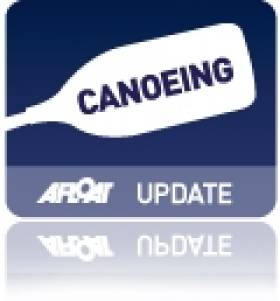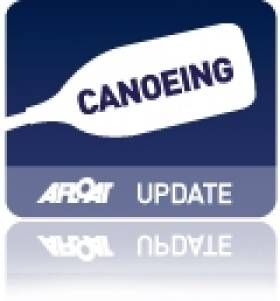Displaying items by tag: World Sprint Championships
Jezierski Eighth in B Final at Canoe Sprint World Championships
#CANOEING: Andrzej Jezierski finished eighth of nine in his B Final of the men’s C1 200 metres at the Canoe Sprint World Championships in Moscow today. It placed him 17th in the world. On Saturday, Michael Fitzsimons and Barry Watkins won their C Final to finish 19th overall in the men’s K2 1,000 metres, which is also an Olympic discipline.
Canoe Sprint World Championships, Day Four (Irish interest, selected results)
Men
K2 1,000m – C Final (Places 19 to 27): 1 M Fitzsimons, B Watkins 3:15.327.
K2 200m – Semi-Final: 7 P Egan, S Dobrovolskis 34.004.
C1 200m – Semi-Final (First Three to A Final; next Three to B Final; rest out): 1 Lithuania 38.320; 6 A Jezierski 39.638.
K1 5,000 – Final: 1 Australia 20 mins 12.981; 21 P Egan 22:52.889.
Women
K1 – B Final (Places 10 to 18): 4 J Burke 3:05.18.
K1 200 – Semi-Final: 8 J Egan 43.097.
K1 5,000 – Final: 1 Britain 23 mins, 10.957 secs; 11 J Egan 24:08.510
Sunday
Men
C1 200 – B Final (Places 10 to 18): 1 Azerbaijan 38.885; 8 A Jezierksi 40.926.
#CANOEING: Pat O’Leary placed ninth in his A Final and four Ireland crews made it to the semi-final stages at the canoe sprint World Championships in Moscow today. Andrzej Jezierski had the best placing in a heat, finishing fourth in the C1 200 metres. Ireland will have three semi-finals tomorrow: Jenny Egan competed in her K1 500m semi-final today and finished ninth.
Canoe Sprint World Championships, Day Three (Selected Results; Irish interest)
Men
K2 200m – Heat Five (All 7 Through to Semi-Final): 1 Italy 32.134; 6 P Egan, S Dobrovolskis 35.995.
K1 (Legs Trunk and Arms) 200m – A Final: 1 Ukraine 39:208; 9 P O’Leary 42.541.
C1 200m – Heat Three (First 6 to semi-finals): 1 Spain 39.622; 4 A Jezierski 40.886.
Women
K1 500m – Heat One (First Six to Semi-Finals): 1 Hungary 6:18.13; 5 J Egan 6:22.11. Semi-Final: 9 Egan 2:00.619.
K1 200 – Heat Five (Seven to Semi-Final): 1 Kazakhstan 40.687; 7 Egan 45.092.





























































